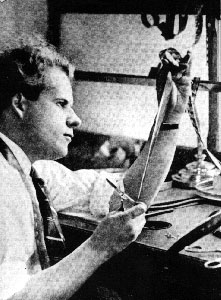D. W. Griffiths work helped influence Russian film makers by introducing cross cutting and montage.
Sergei Eisenstein
Metric
Where shots are edited purely by timing alone (e.g. one shot every two seconds)
Rhythmic
Where shots are edited according to a scene's internal rhythm and continuity.
Tonal
Where shots are edited for emotional effect, i.e. shot length is determined by their emotional meaning
Overtonal
An combination of Metric, Rhythm and Tonal montage types for a more complex effect
Intellectual
Uses a combination of shots outside the film to create a meaning (i.e. juxtaposing a shot of cattle being murdered into a massacre scene to drive home the 'murdered like cattle' simile)Dziga Vertov
Believed conventional storytelling to be corrupting and false, and placed emphasis on the truth of cinema. Tried to make a cinematic 'language' unique from theatre, literature etc.
Cut his films to generate thematic connections, or for the emotional effects of juxtaposition, making a montage style unmatched until the era of the music video. His work and theories influenced documentary realism (cinema verite) in the 1960s.
Vsevolod Pudovkin
He is credited with coming up with the five editing techniques:
Contrast
Where conflicting shots are juxtaposed with each other to drive comparison of two (or more) seemingly disparate events
Parallelism
Where scenes with similar visual elements are juxtaposed next to each other to drive comparison. Often used for things like time skips, which shows how the same person has changed over time
Symbolism
Where two shots are juxtaposed to provide a visual metaphor
Simultaneity (cross-cutting)
Where scenes are shown to be happening at the same time by juxtaposing them with each other
Leit Motif
A recurring visual element or musical phrase associated with a person, place or idea (e.g. emperors march in Star Wars)



No comments:
Post a Comment